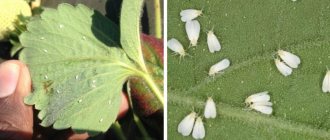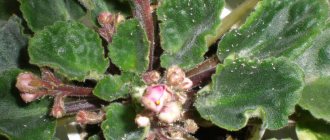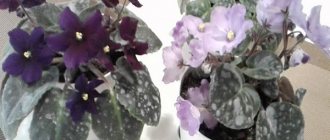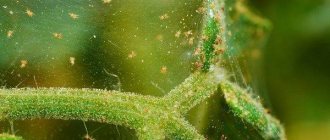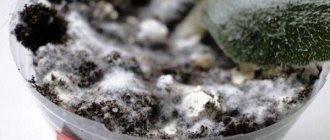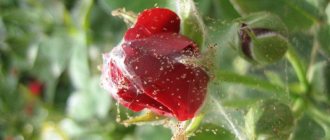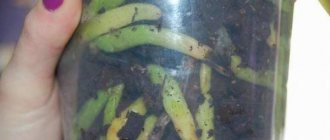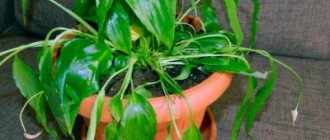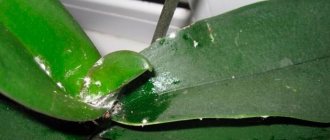Violets are often affected by various diseases and pests. To get rid of them You must first determine who attacked your violet.
If pests are not detected in a timely manner, there is a risk of losing the entire collection of plants.
Pests appear at any time of the year, but there is an increased danger in spring and summer . This is due not only to open windows, but also to the following reasons:
- increasing collections of home flowers through the acquisition of new plants;
- the appearance of bouquets with cut flowers at home;
- replacing the soil with a new, possibly contaminated one;
- non-compliance with agricultural practices in connection with departure.
IMPORTANT! You should periodically inspect the plant, flowers and buds for pests.
Treatment of Saintpaulia in case of parasite damage, as a rule, comes down to complex repeated treatment of all domestic flowers with specialized preparations , after which it is recommended to replant the plants in fresh soil.
All infected plants are treated with special preparations.
To properly get rid of pests, you need to distinguish them from each other and know who exactly attacked your violet.
How to reduce the risk of parasites on violets
Be sure to keep the violet purchased (or acquired in another way) in “quarantine” for two to three weeks. If you have any suspicions about its condition, treat the plant with Fitoverm and water the substrate with Fitosporin-M once a week for a month to prevent diseases.
If you use ready-made soil for planting and replanting Saintpaulias, be sure to sterilize it first, since soil from greenhouses, greenhouses and flower beds can sometimes be contaminated. Conduct your own soil collection away from the city, somewhere in the forest. Wash and sterilize old pots well.
Do not allow a sharp decrease or increase in the temperature; the room air is too dry - moisten, do not overdry the substrate and do not flood it. Provide Saintpaulia with bright but diffused light in sufficient quantities for growth and flowering. Otherwise, your Saintpaulia will be weakened and vulnerable to parasites. Read more about the rules for caring for violets here. Small pests cause the greatest harm to violets. In this article we will talk about each insect and how to deal with it in detail.
Prevention of insects affecting indoor Saintpaulias
To avoid the spread of insects to all your plants, just take simple measures:
- Have you treated Saintpaulias for pests?
- For all new violets, quarantine conditions must be created for 14-20 days. Spraying with chemicals is not necessary. If no signs of insect activity are found within the specified period of time, you can safely put the violet on the shelf along with the rest
- It is not recommended to place flowers plucked from the flowerbed next to violets.
- To prevent insects from crawling from a diseased violet to a healthy one, the plants should not touch their leaves.
- Regular wet cleaning of the premises is the key to the health of violets. This helps maintain the required humidity and prevents insects from moving along with the dust.
- Pots and trays must be disinfected before use
- Before transplanting, any soil, even purchased soil, must be sterilized.
RegularNo
Garden soil should absolutely not be used as a substrate for growing violets due to the presence of many microorganisms in it. It is better to collect soil in the forest.
- From time to time it is necessary to bathe the plant. This allows you to wash off adult insects and their larvae from violet leaves.
- Withered leaves and faded buds must be pruned in a timely manner
Saintpaulias not blooming? There may be several reasons for this; we will discuss them in detail in our next article.
Failure to comply with proper care conditions (temperature, humidity, lighting), as well as frequent watering, weakens the plant.
In this state, it cannot resist attacks from parasites.
Amateur flower growers always want to protect their plants from pests. Unfortunately, this is not always possible.
Therefore, it is very important to know methods of dealing with uninvited guests. The tips given in this article will help in the fight against the main insects that can destroy violets.
And so as not to have to use them, do not forget about preventive treatments of the plant and timely transplants.
Nematodes
The most dangerous insects for violets are nematodes - tiny worms. They usually affect Saintpaulias weakened by disease or improper care. Nematodes settle in the soil on the roots. They often penetrate into the roots and into the vessels that feed the rosette, after which they suck out the juices from them. As a result of their vital activity, toxic substances are produced. In places of damage, swellings and thickenings (galls) form on the roots. The process of the flower’s absorption of nutrients from the soil is disrupted.
It is almost impossible to detect the pest in its early stages. Only when transplanting violets, during inspection of the roots, can the lesion be determined. When there is a large accumulation of nematodes, light green spots appear on the leaves, which darken and dry over time. Thickenings appear on the stem. The growing point of the violet also begins to dry out, and new leaves appear deformed.
Violets affected by nematodes are stunted in growth, weaken, and do not form buds. Their stem gradually becomes bent. It is almost impossible to remove nematodes. The violet will die sooner or later. But nematodes can also move into neighboring pots, so the plant affected by parasites should be destroyed along with the soil, and the pot, tray and flowerpot, if used, should be thoroughly disinfected.
To prevent infection with nematodes, we recommend purchasing substrate for your indoor violets only in specialized stores. Be sure to heat the soil you prepare yourself in the oven or disinfect it in any other way, for example, steam it or freeze it in the freezer.
Treatment with celandine
You can use a plant such as celandine. The way to use it is as follows:
- Flowering celandine is collected in the amount of 300 g raw or 100 g dry;
- pour a liter of water over the grass;
- leave for 36 hours, you can boil for half an hour;
- Spray the affected leaves with the resulting solution.
Celandine in the form of a tincture or decoction helps against aphids
Ticks
In a dry, hot room, various types of mites are frequent guests of indoor violets. Below are the signs of a tick and photos of different types.
Red spider mite
- So, you will detect the appearance of a red spider mite by red dots and thin cobwebs on the leaves of the plant. The leaves curl and fall off.
Spider mite
- You can recognize a common spider mite by its heavily cobwebbed leaves with brown indentations on the surface. As a result of its vital activity, violet leaves become brittle, darken and fall off.
Cyclamen mite is visible only under a microscope
- Cyclamen mites like to settle on young leaves in the center of the rosette. They suck the juice from the leaves, causing them to become deformed and covered with yellow spots. The flower stops growing, the stem bends and becomes shorter, the leaves curl and die, the buds become deformed and do not open.
This may be interesting: Eustoma (Lisianthus) - planting and care at home
If parasites are detected, we advise you to take the flower pot to the bathroom and try to wash off the insects under the shower. However, it will not be possible to cope with all individuals and their larvae using this method alone. For a complete guarantee, you will have to treat the violet with chemicals - insecticides. There are universal remedies for a complex of pests - “Fitoverm” or “Aktellik”. Treatment involves spraying the leaves and watering the soil two to three times at weekly intervals (read the attached instructions).
How to treat violets against ticks
Ticks belong to the class of arthropods and are not affected by insecticides used to kill insects. Acaricidal preparations are produced against these pests, which can infect mature specimens and their eggs. If severe cases are detected, it is necessary to increase the frequency of plant treatment, taking into account that the pests develop immunity to the pesticide used.
To read: The best remedy for itching mosquitoes
Popular chemicals will help get rid of various types of parasites; methods and doses are indicated in the instructions for use:
- Chemicals of the avermectin group (Aktofit, Akarin, Agravertin, Fitoverm) are diluted at the rate of 10 ml per 1 liter of water.
- Oberon. The active substance, spiromesfin, penetrates deeply into the leaf, but does not disperse through the vessels of the flower; dilute 3 ml per 10 liters of clean water.
- Envidor. The active substance is spirodiclofen. It has a contact effect and kills pests of all levels of development. Dilute 6 ml of the substance per 10 liters of water.
- Sunmite. Active ingredient, pyridabene. They are treated with it only once, the second disinfection is carried out with another means. Chinese equivalent, Taurus.
- Nissan. Active ingredient: hexythiazox. Quickly kills parasite larvae and egg laying due to its ovicidal effect. Non-toxic to humans, very durable, compatible with almost all other products.
There are many more tick control products that can be used in residential areas. It is very important to follow the dosages and instructions given in the instructions. It should be remembered that drugs belonging to the second and third categories of danger should not be used in places where people live; animals may die and health problems may arise.
This video shows how to treat violets for mites:
It is also useful to read: “Vermitek”, from ticks
Sciarides
In an over-moistened and rotted substrate, flies and mosquitoes - sciarids - can appear. Adults are almost safe for violets, but their larvae quickly destroy and compact the substrate, reduce the access of oxygen to the roots, which causes enormous harm to the violet’s root system. However, if there are a huge number of midges, they begin to eat the leaves and stems of homemade violets. Sciarides pose a particular danger to young, not yet mature violets. Their vital activity leads to rotting of the stem and root system of the flower.
To get rid of them, you need to treat the soil with a solution of Aktara or Karbofos (water it). Additionally, you can coat the edges of the pot with chalk to prevent cockroaches. Adults are destroyed by any aerosols such as “Dichlorvos” or “Raid”. If the substrate is heavily infested with midges, it should be replaced completely. New primer should be calcined for 30 minutes in the oven to guarantee. The pot should also be disinfected. In the future, avoid waterlogging the soil.
Pests of violets are Sciaridae, or fungus gnats.
Sciarids - every Saintpaulia lover is familiar with these pests of violets. Everyone knows the little flies that hover over potted plants. Sometimes there are almost none, sometimes there are hundreds.
Sciarides do not cause any significant harm to adult Saintpaulia plants under normal cultivation practices. Typically, sciarid larvae feed on rotting plant debris in the soil. In this case, the damage caused to the Saintpaulia root system is small and is quickly compensated by the violet due to the growth of new roots. However, when sciarids multiply en masse, they begin to actively feed on living plant tissues, which allows them to be classified as pests.
Dealing with flies is not very difficult. One watering of the soil with Aktara will solve this problem, but the very presence of these flies indicates that the soil is dense and prone to acidification, which is what is happening. This is a serious signal that the roots of violets may well rot from waterlogging and lack of oxygen in the soil. This problem must be dealt with only by selecting ingredients for composing the soil. More rippers, less nutritious, dense soil. If possible, take soils without sand in them, which makes it difficult for the soil to “breathe.”
Aphid
Aphids may appear on the back of young leaves of indoor violets. She can fly to you from the neighboring balcony through the window, or you yourself can bring her into the apartment with flowers bought in a store or cut at the dacha. In addition to Saintpaulia leaves, it affects peduncles, buds and flowers. These small green (gray or black) insects feed on the sap of the plant. As a result, the growth of the flower slows down, the leaves fade, and the flower petals become deformed and dry out. When the aphid colony is numerous, it forms a white layer of sticky liquid on the surface of the leaves.
To fight aphids on violets, purchase one of the insecticides in the store: Fitoverm, Actellik, Mospilan, Actofit. Carry out the treatment strictly according to the instructions and in the quantity indicated on the packaging. Once is usually not enough to get rid of prolific insects.
Whitefly
Whiteflies are herbivorous insects that often settle on indoor violets. A photo of the pest can be seen below. Their body length is about 3 mm. Insects feed on plant sap, both adults and larvae.
Whiteflies hide on the back side of the leaf blade, where they parasitize, leaving behind a sticky coating. This honeydew becomes an ideal soil for the development of sooty fungus. In addition, the larvae of the parasite attach themselves to both the foliage and the stems of the flower, parasitizing in this place for a long time.
The infected plant begins to weaken, lags behind in growth, and loses its decorative effect. The leaves wither and the buds do not open. With weakened immunity, violet loses its ability to resist pathogens of bacterial, viral and fungal diseases.
In order to get rid of whiteflies, you can use the biological product "Actofit". This bioinsecticide is often used in floriculture against a wide range of pests. Usually 2-3 treatments are carried out with 10-day breaks. Also, “Aversectin S” and “Avertin-N” show very good results in the fight against whitefly. They are especially effective in cases of massive infestation of flowers with larvae. When this parasite appears, Akarin, Fitoverm and Actofit are often used.
Thrips
Thrips on violets also like to feed on sap. These are small flying “insects” of a dark brown color. They have a wide range of attacks on indoor plants, including eating foliage. Thrips carry causative agents of various violet diseases from outlet to outlet, so they are very dangerous for indoor crowded plantings. You will see their presence by white stripes, brown or black spots on gnawed leaves and flowers. You can try to collect thrips by hand, but it is better to treat the flower with preparations such as Fitoverm, Actellik or Aktara. It is necessary to process not only the violet leaves, but also the substrate. Pick off flower stalks - Saintpaulia pollen is a favorite food of thrips.
This may be interesting: Passionflower - home care
Classification of diseases
Of course, indoor violet diseases are easier to prevent than to treat. If there is a suspicion that the plant is sick. First, you need to determine what happened. There can be many reasons:
- If the disease is caused by a fungal, bacterial or viral infection, they must be isolated from other indoor plants before treatment. Many of these diseases are highly contagious.
- The same goes for parasite infestation. In this case, in addition to quarantine, it is worth applying complex treatment even to those plants that seem healthy.
- It’s easier if the disease is not infectious. In this case, simple agricultural techniques are sufficient. As a rule, such diseases are associated with a deficiency of certain substances.
Let's look at some diseases of violets and their treatment.
Mealybug
If your violet begins to become deformed and becomes covered with red-brown spots, and a white coating appears on its leaves, stems and petioles where they connect with the stem, most likely the violet has been attacked by another dangerous pest - the mealybug. It damages the folds of leaves and young flower stalks. It usually appears from other infected plants that you brought from the store or from a walk in the open air. In addition to appearance, infection with this parasite is easily recognized by the smell of the substrate - it emits an unpleasant mushroom aroma. Upon closer examination, you can see the worms themselves, which look like white fluff.
The affected violet quickly fades. Its leaves become dull and yellowish. Remove wilted parts of the plant. Treat the plant against mealybugs with one of the preparations: Aktara, Actellik or Fitoverm. It is better if you replant Saintpaulia into new soil, having first removed the remnants of the old substrate from the roots.
External signs
In order not to miss the onset of infection, when aphids can be quickly gotten rid of, you need to understand what their signs are:
- painful appearance;
- young leaves and shoots wither, turn yellow, curl;
- unopened buds fall;
- the presence of sticky mucus on the plant;
- the appearance of ants;
- blackening of the plant (sooty fungus has appeared).
Photo of aphids on violets.
It is difficult not to notice the defeat of aphids due to the large accumulation.
On what part of the plant do they settle?
Preference is given to the tips of shoots and young leaves . By affecting the very top part of a young shoot, it can be confused with a dying bud. After this, she moves to the entire escape. also eat the buds, flowers and roots of the plant.
Parasites can be detected with the naked eye. They live mainly on the underside of leaves or leaf petioles.
Woodlice
With high humidity in the room and frequent waterlogging of the substrate, woodlice settle in pots with violets. Woodlice are tiny white land-dwelling crustacean insects. They look like small armadillos. In moist and loose soil they multiply quickly and damage the roots and leaves of violets. Their presence is especially dangerous for still young, immature plants. In old houses and basements, where dampness prevails, woodlice can still be found today. Perhaps some individuals have made their way into your home.
Drugs - acaricides, of which there are a large number in special stores, will help destroy woodlice from violets. Purchase the appropriate preparation and carry out the treatment (spraying the plant and watering the substrate) in accordance with the instructions.
Basic conditions for growing Uzambian violets
Among flower growers, it is believed that this indoor plant is very capricious and susceptible to diseases. This misconception is easy to refute if you create the right conditions for its cultivation. Considering the conditions of natural growth, it is easy to approach them:
- No need to use large pots.
- They need to be placed on windows facing west or east.
- In order to ensure year-round flowering, it is advisable to use artificial lighting. Soft diffused light from fluorescent lamps is suitable.
- The temperature should not be very high or low. 20–22 °C is considered optimal. Sharp fluctuations are not allowed. You should not place them on a window that is used to ventilate the room.
- The soil for growing should be loose, well-permeable, and not susceptible to acidification. Mixtures of rotted leaves, turf, peat with the addition of coniferous soil have proven well. Various baking powders are often additionally used.
- Watering should not be done abundantly. Do not allow moisture to stagnate in the roots.
- Approximately twice a month it is worth feeding with mineral fertilizers.
- Air humidity is not lower than 50%. But spraying is not advisable. This plant does well among others or on wet pebble soil.
By observing these requirements, you can admire flowering plants throughout the year and not be particularly afraid of violet disease. However, you should know how to treat your pets if they get sick.
Podura (springtails)
Sometimes, on the surface of a damp substrate in a pot with a violet, springtails or podura settle. When the owner sees this insect for the first time, he literally freezes with horror - after all, tiny white or cream-colored insects with antennae are crawling in the pot under the flower. There are specimens painted in a greenish or silvery tint. The average size of a podura is approximately 2 mm, but there are also large specimens, up to 1 cm in length. Some of them crawl, others also jump with the help of a special fork attached to the underside of the abdomen. By the way, this feature (jumping) distinguishes springtails from the larvae of other insects - mealybugs, fungus gnats and thrips.
In fact, poduras in small quantities are not dangerous for indoor plants, including violets. They are part of the natural soil fauna. Poduras settle on the surface of the ground, love dampness and readily reproduce in it. Poduras feed on plant particles that begin to rot. We recommend immediately reducing watering the plant. Indeed, during overflow, when water stagnates on the surface of the substrate, forming silt, “uninvited guests” form a mass population and become a problem for both the flower and its owner. Particularly large specimens of springtails can damage young Saintpaulia seedlings, and at low room temperatures, minor damage can cause various infections.
This may be interesting: Oxalis (Oxalis) - caring for family happiness at home
To remove the fungus, you should sharply reduce watering of the plant. Pay attention to the composition of the substrate - it should not contain components that cause the development of fungi and mold: sawdust, tea leaves, dry leaves. Deprived of their usual comfortable habitat, springtails will disappear on their own and will stop bothering your violets.
Another folk method against fools. Place the pot with the flower in a basin and fill it with settled warm water “over the top”. When the springtails float to the surface of the water, you will collect them with something like a strainer.
Regular raw potatoes, cut in half, will help to collect springtails. Place both halves cut side down on the surface of the substrate for several hours. All the springtails will gather on the potato cuts. All you have to do is carefully lift the halves from the ground, holding them with a flat spatula from below, in order to collect all the individuals and destroy them. This procedure will have to be carried out several more times until you are sure that you have gotten rid of all the individuals.
If the colony of springtails has become too numerous, we recommend treating the plant with insecticides. The drug Bazudin is suitable. It is scattered over the surface of the substrate in a thin layer. The fools will probably die within a few hours. The drug Pochin will cause a similar effect. Only its granules should be mixed with the soil. It will begin to act immediately, and in a few hours all insects will be destroyed. You can also treat the soil with a solution of Mospilan, Aktara, Pyrethrum according to the instructions. But the main thing is to dry the soil optimally.
Types of insects with photographs and treatment methods
Insect pests are divided into two types:
- Sucking insects especially love young stems, buds and leaves. Aphids, scale insects, thrips, whiteflies, settling in a colony on a plant, suck the juices out of it, as a result of which the flower dies.
- Gnawing insects such as mites, nematodes, and weevils eat the green parts of the violet and the roots.
Thrips
Thrips are pests that suck the juice from violets.
The danger of these parasites lies in their ability to jump from one plant to another.
In this case, the larvae can cause no less harm than adults.
The back of thrips is brown or deep black in color, the belly is red-yellow. On a violet, these insects can be distinguished with the naked eye - their length is 1-1.5 mm.
Most often, the female lays eggs inside the leaf. A clutch can contain up to 1000 eggs. Eggs are not afraid of either heat or cold. Over the course of a year, 4-6 generations of pests change.
A characteristic sign of thrips activity are white dots (bite spots) on the outside of the leaf.
The larvae settle on the anthers of flowers. As a result of their vital activity, the petals lose their decorative effect and dry out.
Thrips colonies are clearly visible on the underside of the leaf during a routine inspection.
Most often, thrips are introduced along with garden flowers.
Measures to combat thrips:
- When traces of the vital activity of these insects appear on the violet, all buds and flowers are cut off to destroy the larvae
- Spraying with pest control agents is carried out to kill adult insects. The main consumption of the drug should be on the lower part of the plate.
- After 10 days, repeat spraying is carried out to destroy newly hatched insects from eggs.
- Over the next month and a half, the buds continue to be cut off to prevent the colony from reproducing
Pests are especially dangerous for varietal violets “Duchess”, “Ice Rose”, “Wedding Bouquet”, “Royal Lace” and “Dance of Galaxies”.
Chervetsy
Scale insects are distinguished by a fluffy white covering that protects these insects.
Thanks to him, this pest is not exposed to most pesticides. The size of the insect is from 1 to 4 mm.
Scale insects live in the axils of leaves.
These parasites are able to move from one plant to another through water if the pots of violets are in a common tray.
When you take a violet out of a pot, you can see a white coating (like flour) on the rhizome - these are traces of the vital activity of scale insects.
There is white fluff at the base of the stem. The leaf blades turn brown and begin to fade. The soil acquires a specific smell of mycelium.
Photos of pests will help you understand whether these insects are really bothering your plants.
How to deal with mealybugs?
Treatment is carried out as follows:
- The violet is transplanted into renewed soil. The old one must be properly cleaned and the roots must be disinfected with disinfectants.
- Since mealybugs are not susceptible to spraying, drugs that kill these insects must be added to the soil in liquid or solid form when replanting.
- These drugs are added three times. The break between applications is 10 days.
Ticks and the fight against them
These pests can only be examined under a microscope.
To settle, ticks choose places with high humidity. Most often they can be found in the center of the flower - the rosette.
The violet signals the appearance of spider mites by seals in the center of the rosette.
Condensed brown or red spots appear on the inside of the leaf. These places are shrouded in cobwebs.
The villi on the outside become rough. Over time, the leaves curl up and dry out.
Treatment methods:
- The violet is washed under warm running water, a significant part of the formed cyclament mites and almost all the laid eggs are washed off.
Cold bathing water will stress the plant.
- Spraying and application of pest control agents to the soil are carried out.
- To effectively secure it to a sheet plate, add a few drops of liquid soap to the solution.
- The procedure is repeated once every 10 days
Flat mites are called flat mites.
Nematodes
Nematodes are colorless worms that grow in the root system of violets.
During their life, swellings are formed on the roots - galls, in which nematodes live.
The size of the gall depends on the size of the worm. Its length can reach 1.5 mm, width 0.8-0.9 mm.
One clutch of a female can consist of 300-500 eggs.
The larvae emerging from these eggs settle in neighboring roots.
Expert opinion
Nesterova Olga Nikolaevna
Specialist in landscaping, master of landscape design. Indoor floriculture consultant
A sign of the appearance of nematodes on a violet is a central rosette with yellowing leaves. The growth of the flower stops, the leaves become covered with yellow, then brown spots and begin to die.
This occurs due to the inability of the roots to transfer nutrients to the flower organs.
Nematode damage can cause violets to become infected with fungal diseases. The causative agents of these diseases easily penetrate the flower organs through damaged root tissue.
Treatment of violets for nematodes is as follows:
- The violet is removed from the pot and cleaned of soil
- Affected roots are pinched off
- Transplantation into fresh soil is carried out
- When transplanting, a preparation is added to the soil - an insecticide in powder form.
- Spraying is carried out with a product that increases the overall immunity of the plant.
- If the violet has been severely damaged by nematodes, you can try to save it by rooting cuttings or the top of the flower.
Are violets often affected by diseases and pests? Most likely you are not caring for them correctly. You can learn how to water violets correctly, how to choose soil, choose a pot, how to transplant and propagate correctly from the materials at the links.
Aphid
Aphids are insects whose body size is no more than 2 mm.
There are representatives of this species both with and without wings.
Twice a month, 150 aphid larvae appear on the violet.
Aphids can be detected by examining the lower part of the leaf blade and buds - this is where these insects usually accumulate.
When aphids settle on a violet, the top of the plant along with the flowers becomes deformed, and the foliage becomes covered with sweet honeydew. A fungus develops on such foliage over time.
Most often, aphids grow on violets that are not cared for.
When aphids appear on flowers, it is necessary to begin fighting them immediately:
- Infected leaves, buds and flowers are cut off
- Some insects can be collected by hand - at first this measure is most effective.
- the violet is washed with warm water with the addition of a small amount of laundry soap - this measure will help remove the remaining insects
- after washing with soapy water, spray with insecticide
- the events are repeated after a week
Sciarides
Small flies - sciarids - pose a particular danger to young violets.
They start in waterlogged, rotted substrate. Adults are practically safe.
The larvae quickly destroy and compact the substrate, thereby complicating the life of the roots.
However, if there are a lot of midges, they begin to eat the green parts of the violet.
To get rid of sciarids, carry out the following steps:
- Treat the soil with solutions of insecticidal preparations.
- Adult spiarids will be destroyed by ordinary dichlorvos.
- If the old substrate is heavily contaminated, it must be destroyed. Saintpaulia is transplanted into new soil. Its roots must be properly treated against insects.
Woodlice
Woodlice are white insects that grow in the root system of violets when the soil is frequently waterlogged.
In appearance, they resemble small armadillos due to the presence of a small growth on their back in the form of a shell.
An overly moist substrate is an ideal place for woodlice to breed. As they multiply, they increasingly damage the roots and leaves of violets. The influence of woodlice is especially strong on immature Saintpaulias in the first months of life.
Watering the soil with acaricides, which are sold in flower shops, will help completely remove woodlice from the root system.
Poduras or springtails
Poduras are not dangerous for the proper growth and development of violets.
These insects naturally grow in the soil and feed on rotting plant debris.
A distinctive feature of these insects is a special fork attached to the underside of the abdomen, thanks to which they can jump.
The usual color for springtails is white, but some specimens are green. The average size of springtails is 2 mm, the largest ones reach a size of 1 cm.
If the colony grows too large, it can cause a lot of trouble for the green part of the violets.
Measures to combat fools:
- The main measure is to reduce the number of waterings. Dry soil does not contain silt, which contains the main nutrients for these insects.
- You can use the method of immersing the violet head-first in warm water. In this case, the insects will quickly float to the surface of the water. You can collect them with a regular strainer.
- Potatoes cut into pieces are also used to remove podurs. The peeled parts of the potatoes are placed on the ground. Over time, springtails will collect on the cuts. Insects collected in this way are destroyed along with the potatoes. If necessary, this procedure is repeated.
- If there are too many springtails in a flower pot, using insecticides will help. To do this, solid preparations are scattered over the top layer of soil. The main condition is that the soil is completely dry.
Quite often, scale insects appear when greenhouse conditions (and therefore high humidity) are created when growing Saintpaulia from leaves.
Scale insects and false scale insects
If at least one scale insect was found on the violet during the inspection, you need to treat all the flowers in the house with insecticides.
A distinctive feature of this insect is the brown armor on its back.
The scale insects have flat armor plates, while the false scale insects have pea-shaped armor plates.
Under these plates, scale insects bear young, which, as they grow, fall out and spread to other flowers.
The body length of an adult insect is 7 mm.
Evidence of the appearance of scale insects is sticky discharge and tubercles on violet leaves.
In the place where the pest stuck to the leaf blade, a yellow dot forms, which becomes larger the more the scale insect drinks juice. Over time, the leaf turns yellow and dries out.
The control measure is to remove adult pests with tweezers and treat them with special insecticides against young scale insects.
Whiteflies
Whitefly appears on Saintpaulias that are not cared for. This is a white insect that can fly. The body length of whiteflies reaches 3 mm.
There are about 200 species of this pest, but only one settles on violets - Trialeurodes vaporariorum, presumably brought to Europe from Brazil.
Since the main supply of juice necessary for the growth of the violet goes to these insects, the violet quickly weakens, loses its decorative effect and dies.
In addition, bite spots on leaves are an ideal place for the development of fungal diseases.
If your plants have whiteflies, you need to do the following:
- Damaged leaf plates and petals are removed.
- Spraying with systemic insecticides is carried out once a week from the moment the insects appear until they are completely eliminated.
- Dichlorvos is excellent for killing adult whiteflies.
These varieties of violets will be a worthy decoration for your collection: “Amadeus”, “Raisin”, “Compass Rose”, “Chimera” and “Frosty Cherry”.
Scale insects and false scale insects
Sometimes on violet leaves you can find sticky discharge and tubercles from hidden parasites. These are scale insects or false scale insects (coccids). They are located on violet rosettes, on its leaves or petioles. The insects reach seven mm in length and look like brown scutes. In scale insects they are flat, while in false scale insects they are pea-shaped. Great harm is done to the plant. At the site of the parasite's suction, a yellow spot appears on the leaf, which grows in size as the juice is sucked out. Then the leaf turns completely yellow, curls and falls off. If there are a lot of parasites, the violet will stop growing, the leaves will dry out, and it will die.
If you find at least one adult violet on an indoor violet, we advise you to treat the flower and all nearby rosettes as soon as possible. Scale insects carry many young ones under their shells, which easily move and disperse. Scale insects can be removed from the plant manually - with tweezers, a toothbrush or a napkin moistened with alcohol (vodka). Then the plant should be treated with a suitable preparation (Aktellik, Agravertin, Aktara). Avoid crowding of plants, adjust watering and lighting
General characteristics of violets
Uzambara violet belongs to the Gesneriev family. This beautifully flowering plant came to us from the mountainous regions of tropical Africa. You can also find it in Japan and North America.
All types of flowers, and there are more than five hundred of them, and according to some sources more than seven hundred, are very difficult to describe. White, sky blue, purple, light blue, pale and hot pink, cherry purple, dark lilac blue, lilac pink, double and with petals corrugated at the very edge, large and small flowers with proper care are a delight eyes up to nine months of the year.
This is a herbaceous perennial. Its oval or broad-oval leaves are dark green above and light and sometimes reddish below, and the leaves are covered with a soft, ticklish, whitish down. They grow on long petioles and reach up to 8 cm in length. And the plant produces its first buds in the spring. These are solitary flowers with five lanceolate or ovoid petals.
You may be interested in:
A few tricks and your violets will bloom 10 months a year! More than 1,500 species of indoor violets (Saintpaulias) are known. It is unlikely that anyone will be left indifferent by the miniature flowers of various...Read more...
Perhaps not many people know that violets are not only home decoration. They are widely used in medicine. This plant is used to treat allergies, high body temperature and as a diuretic.
Caring for a flower is not difficult, but you need to know the basic rules and adhere to them, since it is with improper care that the plant gets sick.
Reasons for appearance
Aphids are natural inhabitants of the natural environment. It attacks violet leaves, preferring the inner side. The stems and flowers of plants are not left unattended. Numerous small insects, not exceeding two millimeters in length, cling to the flowers, feeding on their juice.
The appearance of these insects on violets does not occur without a reason, and is associated with the growing conditions of the crops. Insects appear on flowers growing in open ground in the garden due to the following circumstances:
- improper agricultural technology - untimely and poor-quality processing of crops, lack of care;
- aggressive environment in the growth zone - disruption of the ecological system, the spread of ants that carry aphids and contribute to their reproduction.
Pests, along with garden flowers, affect indoor flowers. Insects are not embarrassed by the limited number of objects of attack and the closed environment.
It is difficult to completely eradicate aphids in the garden. The gardener needs to regularly check the plants and take preventive measures to prevent the spread of pests. But in the situation with indoor flowers, aphids are not difficult to destroy completely and irrevocably.
Symptoms
Even a novice gardener can easily recognize an infestation. The appearance of aphids can be recognized by the following characteristic signs:
- general wilting of the plant;
- numerous white, black or green tiny dots on the inside and then the outside of leaves, stems, buds;
- sticky liquid resembling sweet dew and covering the surface of the flower - subsequently a sooty fungus settles in these areas of the plant;
- tiny white scales remaining from hatched larvae;
- leaves curl, darken, become limp;
- the upper young shoots become deformed and dry out;
- the flowers take on ugly shapes, the violet stops throwing out new buds.
In addition to the direct harm associated with the loss of internal juices by the plant, aphid infestation threatens with the following unpleasant consequences:
- In the process of life, insects secrete a sticky enzyme that promotes the development of fungal diseases;
- attracting other pests - ants, mites;
- the occurrence of viral diseases in horticultural crops.
In case of severe infection, the plant stops blooming, withers, and after a few days it dies if the owner does not take emergency measures to combat the scourge.
Routes of infection
Infection with aphids occurs in the following ways:
- natural distribution of insects during the process of reproduction and dispersal. Pests migrate from surrounding crops - winged females fly from neighboring gardens, laying eggs;
- insects are brought by gardeners on seedlings of other plants planted on the site;
- with brought soil containing deposited larvae;
- through ants that spread aphids and increase the number of insects. Ants feed on the sticky sweet secretion secreted by aphids, so they treat it like a pet, transferring it to free plants and protecting it from the encroachments of competitors.
Pests are able to penetrate the closed ecosystem of indoor crops with a new flower when replacing the soil. The massive reproduction of aphids makes it one of the most dangerous pests for garden and indoor plants.


